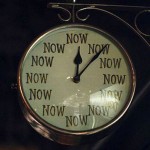Neem Karoli Baba, my first guru and inspiration on the spiritual path, famously said, “Sub ek,” which means ‘All one.’ I, as perhaps many of us, who heard and contemplated the phrase throughout the years, had my own concept of what that phrase meant.
Many drops, one ocean; many petals, one flower; many sunrays, one sun; many parts, one whole.
It was not until I encountered the teachings of Vedanta that I came to understand what Maharaji in fact most likely meant by ‘sub ek.’
From the perspective of the teachings of Vedanta, sub ek, does not mean many drops one ocean, what it means is the truth of the drops and the truth of the ocean is one alone. One water. The reality of the drops and the reality of the ocean is water.
It means that in reality there are not many separate things that actually exist. There is only one thing that really and truly exists, upon which everything else depends for its apparent existence, and Tat Tvam Asi, You are That.
So what is this That, this one thing, that everything is and you are?
What is the one common denominator in the world of name and form?
Isness, existence. In Sanskrit satyam.
Think about it. Do you ever in your entire experience not exist?
Lord Krishna tells Arjuna in the Bhagavad Gita: “There was never a time I did not exist, neither you, nor these kings. Nor will any of us cease to exist in the future.”
(Chapter 2, verse 12)
Things—objects—which exist and are subject to coming and going in terms of time and space—come and go in existence itself. That existence, which is only one and never ceases, that existence you are.
The recognition of one’s very being as that existence is called ‘jnanam’ or ‘self-knowledge.’ You are That right now, but take your Thatness to be a product of the body/mind, and it isn’t.
Is there ever a time you do not exist? What is your experience? You always are.
“Always I am (sat)
Always I shine (chit)
Never at any time am I not beloved to myself (ananda)
Therefore it is established that I am that One alone,
The meaning of the word satchitananda”
Advaita Makaranda (The Nectar of Nonduality) Verse 2


